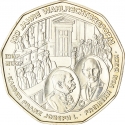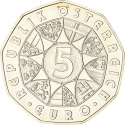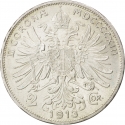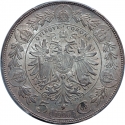You are about to finish your registration. Please check your mailbox (including spam folder). There should be a letter with a confirmation link. Check setting to make sure that your e-mail address is correct.
Send letter againDescription
Franz Joseph I or Francis Joseph I (1830–1916) was Emperor of Austria, King of Hungary, and ruler of the Habsburg monarchy from 1848 until his death in 1916. Initially governing the Austrian Empire, he later established the dual monarchy of Austria-Hungary in 1867. During his reign, he resisted constitutionalism and faced significant territorial losses in the Second and Third Italian Wars of Independence and the Austro-Prussian War. Notably, he agreed to the Austro-Hungarian Compromise of 1867, granting greater autonomy to Hungary.
Franz Joseph's reign was marked by personal and political challenges, including the execution of his brother Emperor Maximilian I of Mexico, the suicide of his son Rudolf, and the assassinations of his wife Elisabeth and his nephew Archduke Franz Ferdinand. The latter's assassination in 1914 precipitated World War I. His annexation of Bosnia and Herzegovina in 1908 and subsequent conflicts in the Balkans further strained international relations. Franz Joseph ruled for nearly 68 years, succeeded by his grandnephew Charles I & IV.
Obverse

|
Depicts the right-facing portrait of Franz Joseph I, wearing a laurel wreath, surrounded by the inscription "Ferencz József Isten kegyelméből ausztriai császár és Magyar-, Horvát-, Szlavon-, Dalmátországok apostoli királya" (Franz Joseph by the Grace of God Emperor of Austria and Apostolic King of Hungary, Croatia, Slavonia, Dalmatia). Below the portrait is the mint mark "K·B" (Kremnica). FERENCZ JÓZSEF I·K·A·CS·ÉS M·H·S·D·O·AP·KIR· |
|---|---|
Reverse

|
Depicts the Holy Crown of Hungary. Below it, the denomination and the inscription "KORONA" are visible, with the issuance year located beneath the text. The central motif is encircled by a wreath made of oak branches and wheat ears, tied together at the bottom with a ribbon. 2 |
| Edge |
Depicts the personal motto of the Emperor as Apostolic King of Hungary: "My faith is in ancient virtue." BIZALMAM AZ ŐSI ERÉNYBEN |
2 Korona
KM# 493 Unger# 1494 Huszar# 2202 Adamo# K6
Related coins
Eurostar - European Realisation







